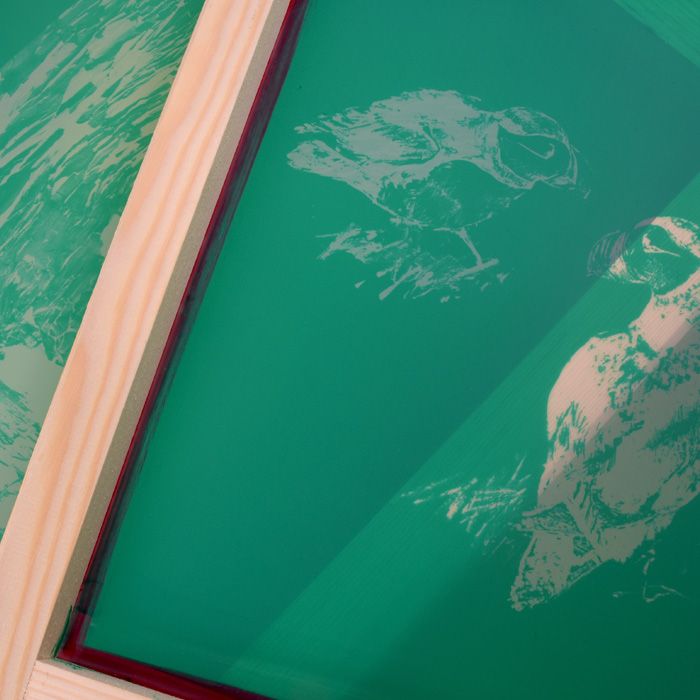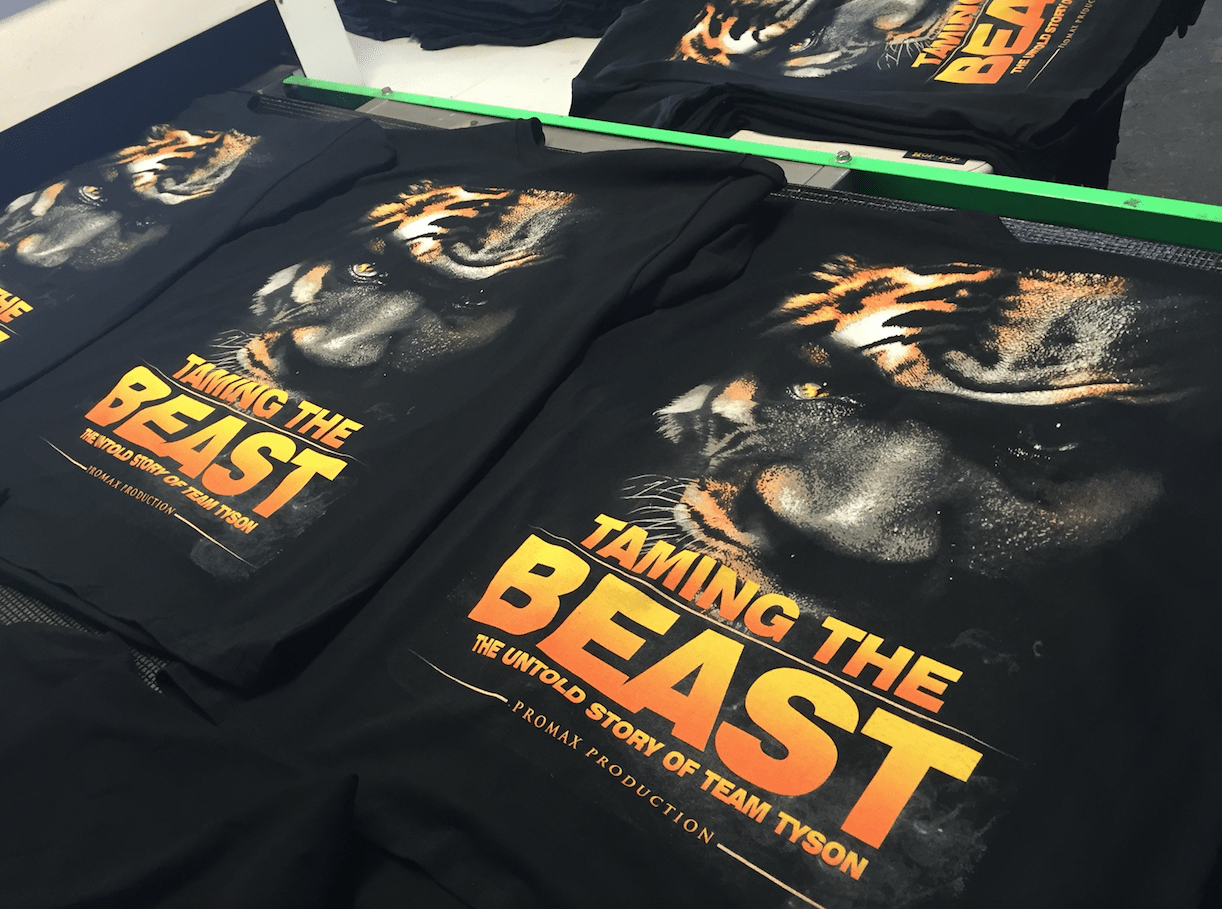Vintage Style Silk Screen Printing for Retro Fashion
Vintage Style Silk Screen Printing for Retro Fashion
Blog Article
Display Printing Uncovered: Everything You Need to Understand About T-Shirt and Garment Printing Methods
Display printing is an interesting technique that integrates art with method, providing limitless possibilities for creativity. All set to discover the essential elements that make screen printing an art form?
The Basics of Screen Printing: Exactly How It Works
When you plunge right into screen printing, you'll uncover it's both an art and a scientific research. At its core, screen printing involves producing a pattern, or screen, that permits ink to pass through just in specific locations.
Position the screen over the fabric, after that make use of a squeegee to push ink with the display onto the garment. Each action is vital, and understanding them will raise your display printing skills, changing simple garments into one-of-a-kind, expressive pieces.
Kinds Of Screen Printing Strategies
Once you comprehend the essentials of screen printing, it's time to check out the numerous strategies that can elevate your styles. One preferred approach is traditional screen printing, where ink is pushed via a stenciled screen. This technique is excellent for vibrant, vivid shades. There's water-based ink printing, which supplies a softer feel and is environmentally friendly, however it calls for a various strategy to curing.
If you're aiming for great information, consider discharge printing. This method eliminates dye from the material, leaving a soft, vintage look. One more choice is plastisol printing, understood for its durability and brilliant shades, making it a favorite for many brands. Experiment with halftone printing to create slope impacts and intricate layouts. Each method has its distinct charm, so do not wait to attempt them out to locate what matches your design best!
Crucial Devices for Screen Printing
To attain spectacular cause screen printing, having the ideal tools is essential. Initially, you'll need a strong screen printing framework, which holds the mesh that moves your design onto the garment. Next off, invest in high-quality squeegees; these are essential for using ink evenly throughout the screen. You'll also require an excellent exposure unit to create your displays, as well as a washout booth for cleansing them after usage. A reliable warmth resource, like a conveyor dryer or heat press, is critical for treating your prints to guarantee durability. Do not neglect a proper work area, outfitted with tables and storage for your supplies. Lastly, safety equipment, such as handwear covers and masks, will certainly keep you safe from chemicals and inks. With the right devices, you'll be well on your means to creating professional-quality prints.
Picking the Right Inks and Products
When picking inks and products for screen printing, you need to take into account the sort of ink that works ideal for your task. Think of textile compatibility to assure your layouts look last and wonderful long. Discover green ink choices to make your printing process more lasting.
Kinds Of Screen Inks
Picking the ideal screen ink is essential for attaining lively, resilient prints that fulfill your job's needs. There are numerous types of display inks to take a look at. Plastisol ink is popular for its versatility and convenience of use, giving exceptional color opacity on dark materials. Water-based ink, on the other hand, supplies a softer feeling and is environmentally friendly, making it perfect for those looking to lessen their environmental effect. Discharge inks get rid of dye from the textile, resulting in a soft, classic look however require certain handling. Finally, specialized inks, such as metallic or glow-in-the-dark, can add special effects to your layouts. Evaluate your task needs and select the ink that lines up ideal with your preferred end result.

Textile Compatibility Considerations
Comprehending fabric compatibility is essential for achieving top quality display prints, especially given that different products react distinctively to various inks. Constantly test your inks on example fabric to ensure they stick appropriately and maintain color honesty. Furthermore, maintain in mind that fabric weight and structure can influence the final result, so picking the best ink and product combo is crucial for your project's success.
Eco-Friendly Ink Options
Environment-friendly inks are becoming a prominent selection for display printers who wish to decrease their environmental effect while keeping quality. When choosing inks, think about water-based inks, which are much less damaging and less complicated to clean up compared to typical solvents. These inks bond well with fabrics, providing lively outcomes without toxic chemicals. You may additionally explore eco-solvent inks that use fewer unstable natural substances (VOCs), making them a safer choice for both your wellness and the earth.
Additionally, try to find inks made from renewable energies, such as soy or vegetable-based options. By choosing the best inks and materials, you'll not just create magnificent styles yet also add to a much more lasting printing process. Make the button, and your prints will certainly reflect your a knockout post commitment to the environment!
Preparing Your Style for Screen Printing

File Style Demands
To guarantee your design looks sharp and lively on textile, you'll need to pay close interest to file layout requirements for screen printing. Make certain your style has a clear background to stop undesirable white sides on your prints. Maintain shade modes in mind; CMYK is typical for screen printing, so transform your RGB creates appropriately.
Color Separation Methods
Shade separation is an essential action in preparing your design for display printing, and grasping it can greatly boost your print top quality. You'll require to break your style right into specific shades, as each color calls for a separate screen during printing. This accuracy not just guarantees precise color representation but additionally improves the printing process.
Resolution and Dimension
Accomplishing the most effective outcomes in display printing begins with ensuring your layout has the right resolution and size. Ideally, your artwork should be at the very least 300 DPI (dots per read review inch) for sharp, clear prints. If you use lower resolution, your end product could look unprofessional and pixelated.
When it pertains to size, consider the measurements of your print area. Layout your art work to match the final print size, ideally developing it in the actual dimensions you'll be printing. This way, you'll stay clear of any unexpected scaling concerns.
Always examine your layout in both vector and raster styles. Vector graphics can be scaled without losing quality, making them excellent for display printing. Preparing properly will assure your layout looks fantastic on every garment!
Step-by-Step Display Printing Refine
Screen printing is a dynamic process that allows you to produce dynamic layouts on numerous surfaces. To get started, you'll need a display, solution, and your chosen ink.
Pour ink onto the display and use a squeegee to press the ink via the pattern onto the fabric. Lift the display very carefully and let the print completely dry. You have actually successfully display printed your design.
Tips for Effective Screen Printing Projects
While you're diving into your screen printing projects, keep in mind that preparation is crucial to success. Begin by collecting all your materials-- inks, garments, screens, and mops. A clean office helps prevent undesirable errors, so clean before you begin.
Following, verify your artwork is high-resolution and correctly sized for your garment. Evaluate your screen for correct exposure and tidy it extensively to prevent spots. When mixing your inks, follow the article source producer's guidelines to accomplish the ideal uniformity.
During printing, use also pressure with your squeegee for consistent outcomes. Do not rush; take your time to validate each print meets your criteria. After printing, allow your garments completely dry entirely before dealing with or packaging them.
Lastly, constantly maintain a sample of your work for future referral. In this manner, you can examine your development and enhance your methods in time. Satisfied printing!

Often Asked Questions
Just how Long Does It Take to Establish up a Display Printing Job?
Establishing up a display printing work generally takes around 30 mins to an hour. You'll prepare the screens, mix inks, and change journalism. The time differs based on complexity and experience, so remain arranged!
Can I Print on Different Fabric Keys In Making Use Of the Exact Same Technique?
Yes, you can print on various textile types using the same strategy, however you'll need to adjust your inks and settings. Some materials take in ink in different ways, so exploring warranties the very best results for every product.
What Are Usual Errors to Avoid in Display Printing?
When screen printing, avoid typical mistakes like making use of the wrong ink, neglecting correct exposure times, or missing pre-press checks. Always test your setup and keep tidy screens to guarantee quality results each time.
How Can I Correctly Clean and Maintain My Screen Printing Tools?
To correctly tidy and maintain your display printing devices, you need to frequently clean displays with appropriate solvents, examine mops for wear, and ensure all tools are kept dry and dust-free. Consistency prevents expensive repairs and boosts performance.
Is Screen Printing Eco-friendly Contrasted to Other Approaches?
Screen printing can be extra eco-friendly than various other methods, especially if you utilize water-based inks and eco-conscious materials. By picking sustainable materials and techniques, you reduce waste and reduce your effect on the planet.
Display Printing Uncovered: Everything You Need to Know Regarding Tee Shirt and Garment Printing Strategies
At its core, display printing entails creating a stencil, or screen, that allows ink to pass with only in certain locations. Position the screen over the fabric, then use a squeegee to push ink with the display onto the garment. One preferred technique is standard display printing, where ink is pressed via a stenciled display.When picking inks and products for display printing, you require to take into account the type of ink that works best for your project.
Report this page